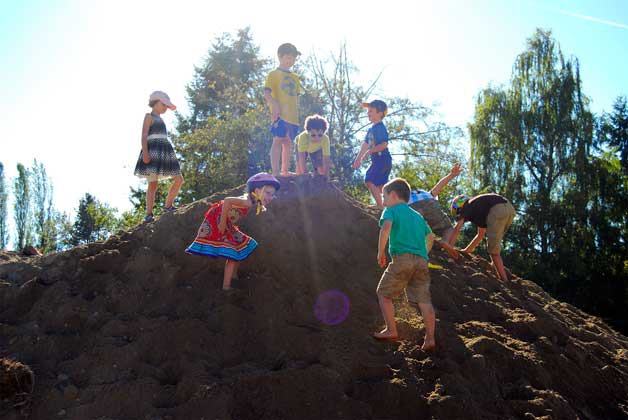Second in a series: This story is the second part to a 12-part monthly series looking back on the district’s 50 years of success.
Fifty years at the Bainbridge Island Metropolitan Park & Recreation District didn’t happen over night. From the start of its long life, a community of supporters worked to jumpstart the agency.
The first decade of the park district was a time of planning, and laying groundwork for what would become today’s nearly 1,500 acres of park land.
“It was an exciting time,” said Larry Burris, one of the district’s first directors.
“We were doing something new.”
While it would be several more years before the first portion of today’s aquatics center would be constructed, it was after a group of island parents began pushing for the first public pool on this side of Agate Pass that led to the formation of the district.
In a special election in May 1965, the Bainbridge community approved the creation of a park agency.
Its five newly appointed commissioners — longtime Bainbridge residents Russ Johnson, Lou Frohning, Dick Adair, Nob Koura and Vann Bucklin — hit the ground running from the start.
In the six years leading up to the district’s first hired staff, Rotary Playfield, Strawberry Hill and Eagledale were officially transferred as park land.
The Rotary Club of Bainbridge Island and the Bainbridge Island School District also backed the formation of the park district from the beginning. Their partnerships allowed the district to run a multitude of programs on a modest budget, despite operating under a two-year levy — a system that lasted the first 40 years of the district and limited longterm planning.
Just months after the election, Rotary Playfield was formally transferred as the district’s first park. A trust account was also opened in the park district’s name to receive funds from the island’s annual Rotary Auction.
Shortly after, the district set its eyes on two federal surplus properties — the former Nike missile sites Strawberry Hill and Eagledale.
Kitsap County officials decided in February 1966 they could not afford to purchase the properties. Thus, Bainbridge’s new local park district was in the running.
Again, with financial help from the Rotary on the down payment for the more than $20,000 purchase, the sites are now among the most prominent park properties on Bainbridge today.
Today, the former missile site at Strawberry Hill is home to a new dog park, three softball and football fields, a skatepark, tennis court and playground. The barracks are now the district’s administrative offices, and yesterday’s missile assembly is today’s indoor mini-gym.
At Eagledale, the former military grounds contain a tennis court, pottery studio and workshop, a sand volleyball court and playground. As one of the highest spots on the island, it also features a lookout with a view of Mount Rainier.
In the same year that the surplus sites went up for grabs, the Bainbridge school district approved the public use of its facilities for park district programs.
“We babied those facilities because we were so appreciative of the opportunity to use them, that was a real important mind set,” Burris explained.
“If we weren’t using their facilities properly, we would have been pretty much dead in the water.”
For Bainbridge’s new park district, 1965 through 1966 was a time of many firsts. But those two years set the tone and the bar for half a century of park acquisitions, community partnerships and recreational programs, all of which have come to define the park district of today.



